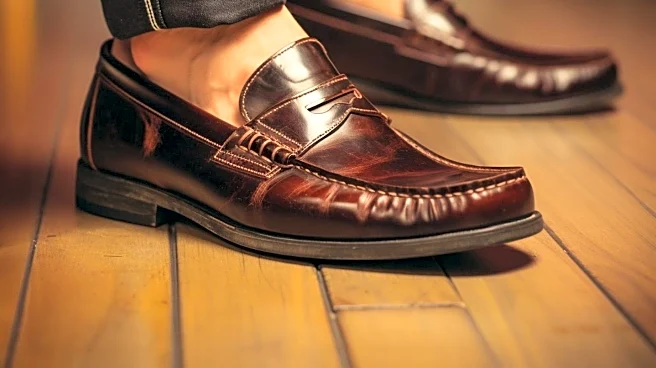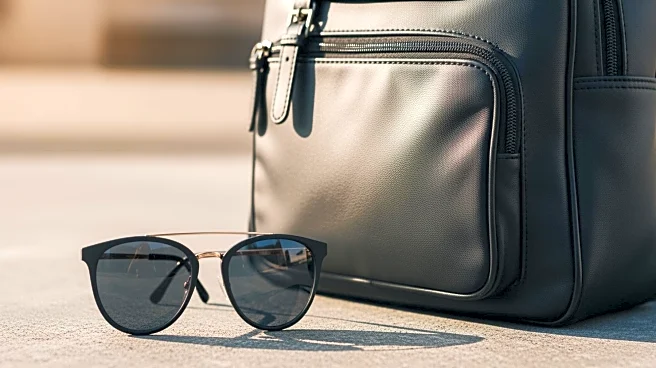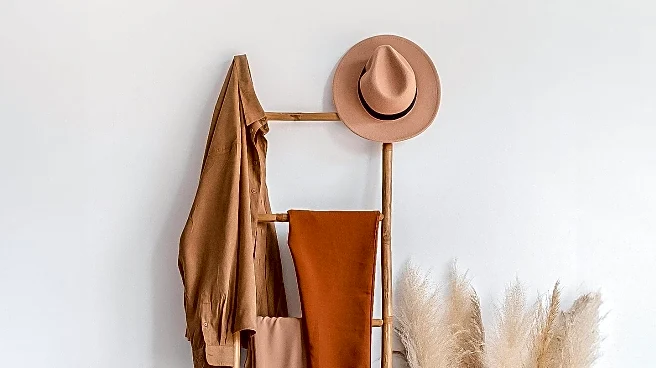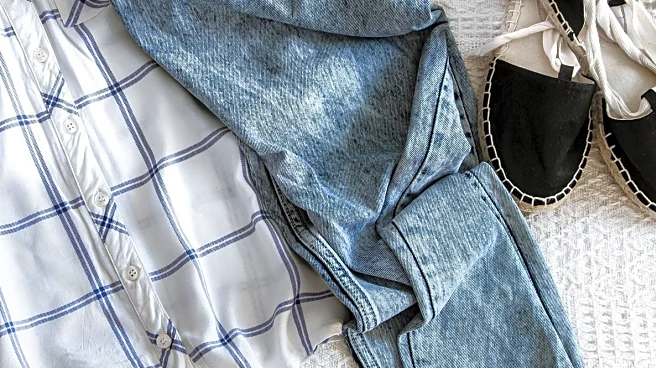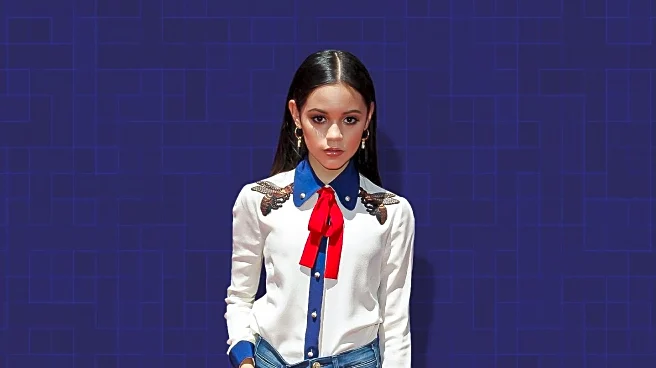What's Happening?
The penny, a staple of American currency for over two centuries, is being phased out due to its high production costs and diminishing use. Despite this, the penny loafer, a shoe style that has been popular
since the 1930s, continues to thrive in fashion. Originally introduced by G.H. Bass as the 'Weejun,' the penny loafer became a cultural icon when students began inserting pennies into the shoe's slot for good luck. The shoe has since evolved to become a versatile wardrobe staple, embraced by fashion insiders, celebrities, and traditionalists alike. Its adaptability allows it to complement a wide range of outfits, from tailored suits to casual weekend wear.
Why It's Important?
The discontinuation of the penny highlights shifts in economic practices and consumer behavior, as digital transactions reduce the need for physical currency. However, the enduring popularity of the penny loafer underscores the shoe's cultural significance and its ability to transcend changing trends. This reflects broader themes in fashion where classic styles are continually reinvented to suit modern tastes. The penny loafer's versatility makes it a valuable asset in the fashion industry, appealing to diverse demographics and serving as a bridge between traditional and contemporary styles.
What's Next?
As the penny is phased out, the fashion industry may see a renewed interest in the penny loafer as a nostalgic nod to the past. Designers might explore innovative ways to incorporate the shoe into modern collections, potentially leading to new collaborations and styles. Retailers could capitalize on this trend by highlighting the loafer's historical significance and its role in American fashion. Consumers may also seek out penny loafers as a way to connect with a piece of cultural heritage, driving demand for both classic and updated versions of the shoe.
Beyond the Headlines
The penny loafer's continued relevance in fashion suggests a deeper cultural attachment to items that carry historical significance. This trend may encourage consumers to value craftsmanship and heritage in their purchasing decisions, influencing broader market dynamics. Additionally, the shoe's genderless and ageless appeal could contribute to more inclusive fashion practices, promoting styles that transcend traditional gender norms.
